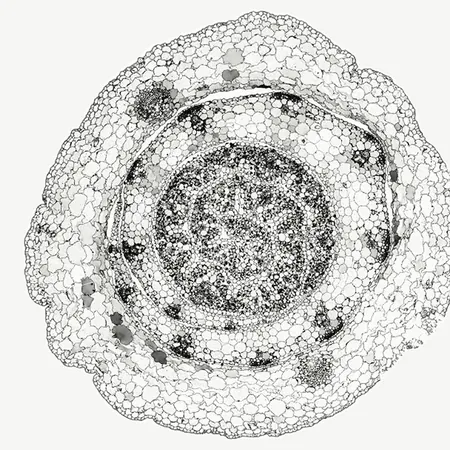
Breakthrough in Plant Photosynthesis Could Pave the Way for Climate-Resilient Crops!
2024-11-20
Author: John Tan
Introduction
In an exciting development that could revolutionize agriculture and combat climate change, scientists from the Salk Institute and the University of Cambridge have unveiled how certain plant species have evolved superior photosynthesis abilities. This remarkable discovery holds promise for creating crops like rice, wheat, and soybeans that are not only more productive but also better equipped to withstand the effects of a warming planet.
The Evolution of Photosynthesis
The fascinating journey of photosynthesis began over 3 billion years ago with ancient bacteria in Earth's primordial waters. As time progressed, these bacteria evolved into plants, adapting their methods of photosynthesis to thrive in changing environments. A pivotal moment in this evolutionary history occurred around 30 million years ago with the emergence of C4 photosynthesis, a more efficient method adopted by plants such as corn and sorghum. In stark contrast, staple crops like rice remain reliant on the older C3 photosynthesis method.
The Need for C4 Transition
With over 8,000 known C4 plant species flourishing particularly in hot and dry climates, the need to transition C3 crops to adopt C4 qualities has never been more urgent. This is especially important as climate change poses increasing threats to global food security. The researchers have taken a crucial step toward solving this challenge by identifying the evolutionary adaptations that enable C4 plants to photosynthesize more effectively.
Research Findings
Their findings, published in the prestigious journal Nature, detail how C4 plants employ specialized cells, known as bundle sheath cells, alongside traditional mesophyll cells to optimize the process of photosynthesis. This dual-cell strategy not only eliminates inefficiencies like the wasteful use of oxygen but also conserves water, allowing C4 plants to achieve up to 50% greater efficiency compared to their C3 counterparts.
Transforming C3 Crops
But how can we instigate a similar evolution in C3 crops? By leveraging cutting-edge single-cell genomics technology, the research team scrutinized the differences between C3 rice and C4 sorghum, discovering that the variations are not due to the presence or absence of specific genes. Instead, the secret lies in the regulatory mechanisms that control gene expression. Transcription factors, which play a key role in gene regulation, showed that both rice and sorghum shared the necessary genetic components to potentially shift to C4 photosynthesis.
Future Directions
This groundbreaking revelation suggests that it may be feasible to transform the photosynthetic pathways of C3 crops like rice to adopt the more efficient C4 strategy. The ultimate goal is to enhance food production and resilience in the face of climate challenges, a quest that will be furthered by the collaborative efforts of initiatives like the “C4 Rice Project.”
Conclusion
Looking ahead, the research team is set to explore the engineering of rice to utilize C4 photosynthesis, a complex endeavor with considerable technical hurdles. However, the implications of their work are monumental: by optimally harnessing photosynthesis, scientists can create more robust crops capable of thriving under adverse conditions, ensuring food security for future generations. This breakthrough sheds light on a crucial aspect of plant biology and offers a beacon of hope as researchers worldwide push forward in the fight against climate change. Stay tuned for more exciting updates on this transformative research that could change the way we grow food!



 Brasil (PT)
Brasil (PT)
 Canada (EN)
Canada (EN)
 Chile (ES)
Chile (ES)
 España (ES)
España (ES)
 France (FR)
France (FR)
 Hong Kong (EN)
Hong Kong (EN)
 Italia (IT)
Italia (IT)
 日本 (JA)
日本 (JA)
 Magyarország (HU)
Magyarország (HU)
 Norge (NO)
Norge (NO)
 Polska (PL)
Polska (PL)
 Schweiz (DE)
Schweiz (DE)
 Singapore (EN)
Singapore (EN)
 Sverige (SV)
Sverige (SV)
 Suomi (FI)
Suomi (FI)
 Türkiye (TR)
Türkiye (TR)